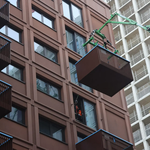crs1026
Superstar
5 years, 6 months.
Wow.
So 2027'ish........
That really does seem needlessly long.
The frustrating part is the seven years that have passed since the original Wynne election promise of 2014.
- Paul
5 years, 6 months.
Wow.
So 2027'ish........
That really does seem needlessly long.
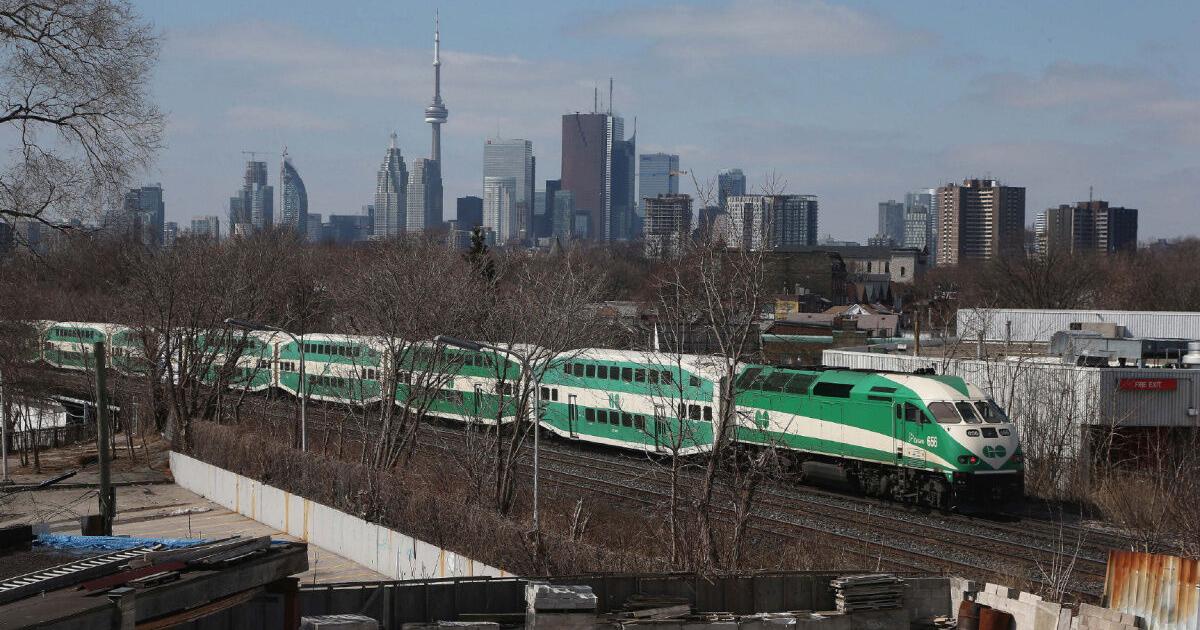
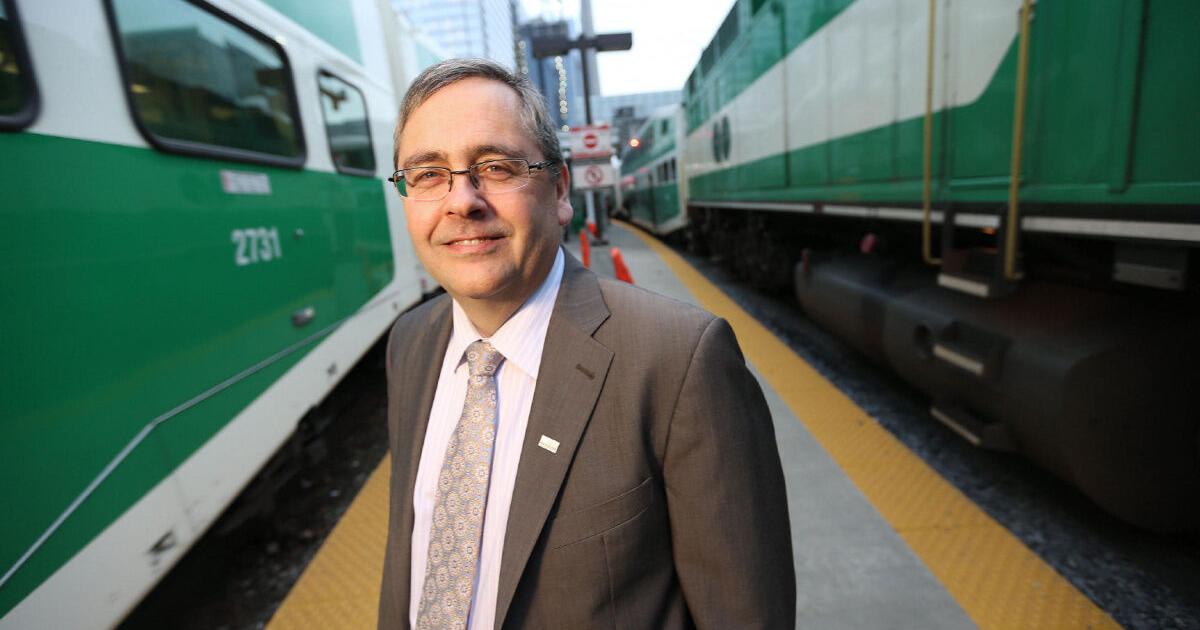
5 years, 6 months.
Wow.
So 2027'ish........
That really does seem needlessly long.
Maybe by then work will finally begin on Highway 7 New too.
^ I might be misremembering, but wasn't the 2014 campaign promise for a certain level of RER service on lines they owned for 2025-2026? I think a promise may have been made in June 2016 for the "off corridor" portion tied to the announcement that the freight bypass would be studied and built by a certain time.
Maybe there are other articles out there or the OLP 2014 platform between April 2014 and September 2014 that track (no pun intended) the change of language from "all" to "corridors we own" and the 10 year part (2024). I think I recall hearing 2025-2026.
So, given today's release of the PDBC, I assume if they go with the option that includes Silver Junction rail separation, it's Friday, October 30, 2026. I guess the challenge is that we don't know when the clock starts on the 66 months.
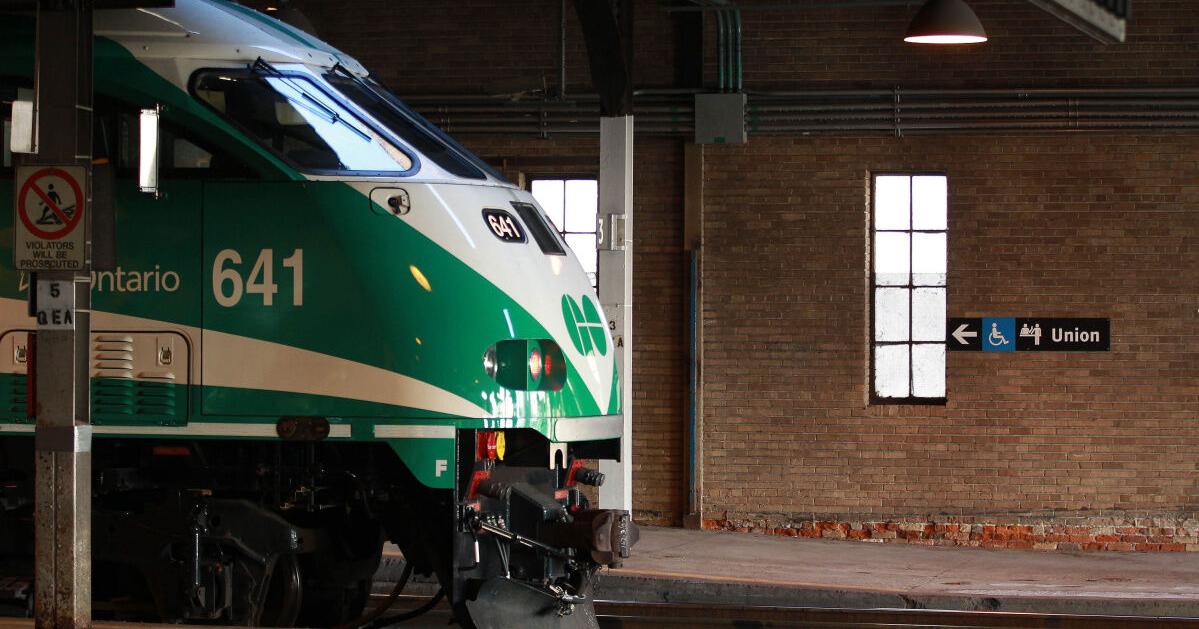
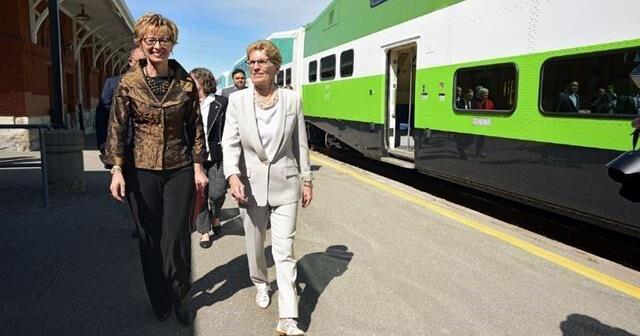
Province will deliver two-way, all-day GO Train service, Wynne says
News Jun 14, 2016 by Jeff Hicks (/waterlooregion-author/jeff-hicks/CDBD7ED6-9268-49BA-B447- D49F7D54AD73/) ! (mailto:jhicks@therecord.com) Waterloo Region Record
KITCHENER — You want two-way, all-day GO train service between Kitchener and Toronto? You will get it, Premier Kathleen Wynne assures.
"Within a decade is the commitment," Wynne told a gathering of media and politicians outside the Kitchener train station on Weber Street on Tuesday morning.
The premier used the event to announce that starting in September two morning and two afternoon trains that currently run between Georgetown and Union Station will be extended to Kitchener, doubling the GO Train service between Waterloo Region and Toronto.
She also announced that the province is committing up to $43 million to help the Region of Waterloo develop its planned transit hub at King and Victoria streets. The hub will connect a number of transportation services, including the new light rail transit line, Grand River Transit, and GO Train and Via Rail service.
The pledge of two-way, all-day GO Train service was initially delivered two years ago. "So that's 2024," Wynne said Tuesday.
The Premier said her government is very confident the commitment will be met now that there's an agreement in principle between transit agency Metrolinx and CN that will result in the construction of a new freight line to run from Bramalea to about Milton.
The new line means CN eventually will move most of its freight traffic from a section of the Kitchener corridor the company owns — roughly between Georgetown and Bramalea — to a new corridor. That will free up capacity for more GO service through Brampton to Kitchener.
"This is a major hurdle," Wynne said of the freight dilemma with CN. "This is a very good agreement and a very good starting point for getting over that hurdle."
But even if that hurdle is cleared, there are still eight years to wait for two-way, all-day trains. At least, as Transportation Minister Steven Del Duca said, the agreement with CN and the ultimate building of a new freight line will permit the province to electrify the GO train service all the way to Kitchener.
But we're talking 2024 or beyond for that to happen.
On page 58 of the aforementioned Kitchener Business Case document from March 2021, they anticipate a "mid to late 2020s" start of electrified service:
View attachment 316352
So this is the “commercially more astute” decision that Phil Verster was referring to in his interview with Reece Martin? Instead of having to build a bypass they can add some passing track? Correct me if I’m wrong, but this still doesn’t allow the whole line to be electrified, correct?
GO trains typically save about 2 to 2.5 minutes per station skipped, so if GO can cover Toronto-Kitchener in 90 minutes making 9 intermediate stops, a (VIA) train making 3 intermediate stops could cover the line in 75 to 78 minutes.VIA can do the Toronto-Kitchener trip in around 90-100 minutes (not sure what the exact time was pre-pandemic). I do wonder what they could pull off as a travel time. When I lived in Kitchener I would always say it would be great to have a few 1-hour express journeys
GO trains typically save about 2 to 2.5 minutes per station skipped, so if GO can cover Toronto-Kitchener in 90 minutes making 9 intermediate stops, a (VIA) train making 3 intermediate stops could cover the line in 75 to 78 minutes.
However, in practice the speed of VIA service will be reduced by the delays and schedule padding associated with meeting trains in the opposite direction, which may be compounded by the fact that the passing tracks along the corridor will be positioned based on the projected travel time for GO's all-stops services.
To examine how a fast VIA service could fit into the single-tracked line, I reverse-engineered the schedule that GO is assuming for the AD2W - no grade separation scenario (the scenario which has been funded).
The report is pretty light on details, but they did drop enough tidbits to piece together a schedule:
- The travel time will be 98 minutes, of which 8 minutes is extra padding to accommodate the meet at Silver Junction [page 51]
- The basic hourly service will meet at Silver Junction while and simultaneously cross between the Guelph Sub and a south platform at Georgetown Station [page 19]
- Additional platforms will be built at Guelph and Acton stations [page 45]
So to work out the station-to-station times, I started with the 2021 schedule (column A in the image below), and translated them to the proposed stopping pattern by assuming two minutes saved per stop skipped (column B). Then I reduced the travel time to 90 minutes by allocating 17 minutes of travel time savings to the segments I think there is the most potential for improvement (column C). Finally, I added back 8 minutes near Georgetown station (column D).
View attachment 316419
View attachment 316423
I placed down an eastbound trip arbitrarily, and then repeated it every hour to represent the "base" hourly service. Westbound trips depart Georgetown 3 minutes before eastbound trips, so that they meet at Silver as described. Based on the travel times, this reveals that the hourly base services will also meet just west of Guelph Station. Hence why GO is building a second platform there.
The second hourly service during peak periods (which I'll call "extra") will meet the base hourly service using the siding at Acton, which I'm assuming will stretch west from the station to position the meet as centrally as possible between the Guelph and Georgetown sidings and thus produce headways as even as possible. Based on the travel times, these extra trips will also encounter the base service just east of Kitchener Station, at a location which is already double-tracked.
Here's the AM peak schedule. I have highlighted the places where eastbound trains meet the first westbound train. The travel times involved some guesswork so they won't be exactly right, but since the end-to-end travel time is correct, the errors should cancel out and the individual station departure times should be within a couple minutes of GO's assumed timetable.
View attachment 316417
View attachment 316422
Given the above, here's my guess as to where tracks which will be added to the Guelph Subdivision:
Existing infrastructure in black, new infrastructure in red:
View attachment 316421
The "Extra" train path would be the one used by CN and VIA trains, during hours it's not being used by GO. Regardless of the type of service using the path, the time in Acton is set in stone because the trains need to meet the base service in a (presumably) short siding there. So variations in travel time between service types need to be accommodated at the adjacent meet locations.
VIA trains skipping Breslau would be a few minutes faster than GO trains, so their next meet to the west would occur further west than with Extra GO trains. That's fine because the new Kitchener Central station will have two platforms (plus future-proofing for a third). Incidentally, this means that we know the platform assignments at the future station: the base service will use the south platform next to the station building, and the VIA and GO "extra" services will use the north platform. That also works out nicely given that all the GO Extra trains will be heading in or out of service, and both of the yards in Kitchener are located on the north side of the corridor.
The meet between CN and the base GO service will be further east given CN's lower average speed. As a result, I suspect that the existing double track in Kitchener may need to be extended somewhat to the east to accommodate this meet.
The next meet to the east would normally occur just west of Brampton Station for GO Extra trains, so GO will presumably fund a new passing track there. It's harder to predict where the new passing tracks will be located along the Halton Sub since trains can technically pass anywhere, but I'm guessing the end result will be something along these lines:
Tracks coloured by primary track user (not necessarily track owner). Green = GO, Blue = CN
View attachment 316420
The "Extra" path is occupied by GO during all times of day, so VIA will need to use one of the "CN" tracks through the corridor. If VIA skips Georgetown Station, they should have enough of a speed advantage to overtake that GO train and pull in front of it east of Bramalea. Then VIA would have a relatively clear shot down the express tracks of the Weston Sub.
Here's my take at a plausible VIA schedule (in Yellow), with meets highlighted:
View attachment 316424
View attachment 316425
The schedule includes 2 extra minutes due to the meet in Acton where the train will typically need to stop and wait for the oncoming GO train, but Acton would not be an official station stop. That way, if the VIA train is behind schedule it can pass through at full speed. By then, the GO train would already be waiting in the siding.
The bottom line is that it does thankfully look possible for VIA to run significantly faster than GO through the corridor, as long as they can negotiate a good train path with CN. The only significant slowdown is that they need to pause at Acton to meet a GO train.
Reading the report (p.50), trains in opposite directions meet at Georgetown GO, not west of Georgetown GO. Therefore, the departure time in both directions at Georgetown GO should be the same.GO trains typically save about 2 to 2.5 minutes per station skipped, so if GO can cover Toronto-Kitchener in 90 minutes making 9 intermediate stops, a (VIA) train making 3 intermediate stops could cover the line in 75 to 78 minutes.
However, in practice the speed of VIA service will be reduced by the delays and schedule padding associated with meeting trains in the opposite direction, which may be compounded by the fact that the passing tracks along the corridor will be positioned based on the projected travel time for GO's all-stops services.
To examine how a fast VIA service could fit into the single-tracked line, I reverse-engineered the schedule that GO is assuming for the AD2W - no grade separation scenario (the scenario which has been funded).
The report is pretty light on details, but they did drop enough tidbits to piece together a schedule:
- The travel time will be 98 minutes, of which 8 minutes is extra padding to accommodate the meet at Silver Junction [page 51]
- The basic hourly service will meet at Silver Junction while and simultaneously cross between the Guelph Sub and a south platform at Georgetown Station [page 19]
- Additional platforms will be built at Guelph and Acton stations [page 45]
So to work out the station-to-station times, I started with the 2021 schedule (column A in the image below), and translated them to the proposed stopping pattern by assuming two minutes saved per stop skipped (column B). Then I reduced the travel time to 90 minutes by allocating 17 minutes of travel time savings to the segments I think there is the most potential for improvement (column C). Finally, I added back 8 minutes near Georgetown station (column D).
View attachment 316419
View attachment 316423
I placed down an eastbound trip arbitrarily, and then repeated it every hour to represent the "base" hourly service. Westbound trips depart Georgetown 3 minutes before eastbound trips, so that they meet at Silver as described. Based on the travel times, this reveals that the hourly base services will also meet just west of Guelph Station. Hence why GO is building a second platform there.
The second hourly service during peak periods (which I'll call "extra") will meet the base hourly service using the siding at Acton, which I'm assuming will stretch west from the station to position the meet as centrally as possible between the Guelph and Georgetown sidings and thus produce headways as even as possible. Based on the travel times, these extra trips will also encounter the base service just east of Kitchener Station, at a location which is already double-tracked.
Here's the AM peak schedule. I have highlighted the places where eastbound trains meet the first westbound train. The travel times involved some guesswork so they won't be exactly right, but since the end-to-end travel time is correct, the errors should cancel out and the individual station departure times should be within a couple minutes of GO's assumed timetable.
View attachment 316417
View attachment 316422
Given the above, here's my guess as to where tracks which will be added to the Guelph Subdivision:
Existing infrastructure in black, new infrastructure in red:
View attachment 316421
The "Extra" train path would be the one used by CN and VIA trains, during hours it's not being used by GO. Regardless of the type of service using the path, the time in Acton is set in stone because the trains need to meet the base service in a (presumably) short siding there. So variations in travel time between service types need to be accommodated at the adjacent meet locations.
VIA trains skipping Breslau would be a few minutes faster than GO trains, so their next meet to the west would occur further west than with Extra GO trains. That's fine because the new Kitchener Central station will have two platforms (plus future-proofing for a third). Incidentally, this means that we know the platform assignments at the future station: the base service will use the south platform next to the station building, and the VIA and GO "extra" services will use the north platform. That also works out nicely given that all the GO Extra trains will be heading in or out of service, and both of the yards in Kitchener are located on the north side of the corridor.
The meet between CN and the base GO service will be further east given CN's lower average speed. As a result, I suspect that the existing double track in Kitchener may need to be extended somewhat to the east to accommodate this meet.
The next meet to the east would normally occur just west of Brampton Station for GO Extra trains, so GO will presumably fund a new passing track there. It's harder to predict where the new passing tracks will be located along the Halton Sub since trains can technically pass anywhere, but I'm guessing the end result will be something along these lines:
Tracks coloured by primary track user (not necessarily track owner). Green = GO, Blue = CN
View attachment 316420
The "Extra" path is occupied by GO during all times of day, so VIA will need to use one of the "CN" tracks through the corridor. If VIA skips Georgetown Station, they should have enough of a speed advantage to overtake that GO train and pull in front of it east of Bramalea. Then VIA would have a relatively clear shot down the express tracks of the Weston Sub.
Here's my take at a plausible VIA schedule (in Yellow), with meets highlighted:
View attachment 316424
View attachment 316425
The schedule includes 2 extra minutes due to the meet in Acton where the train will typically need to stop and wait for the oncoming GO train, but Acton would not be an official station stop. That way, if the VIA train is behind schedule it can pass through at full speed. By then, the GO train would already be waiting in the siding.
The bottom line is that it does thankfully look possible for VIA to run significantly faster than GO through the corridor, as long as they can negotiate a good train path with CN. The only significant slowdown is that they need to pause at Acton to meet a GO train.



